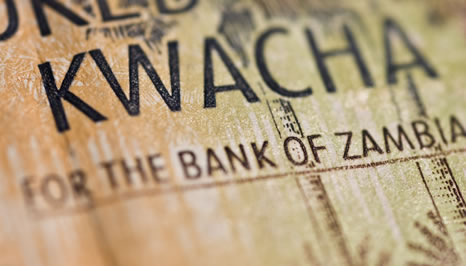Zambia's central bank cut its policy rate for the third consecutive time by 150 basis points, citing the continued decline in inflation and inflation projections that indicate inflation will remain well anchored within the bank's 6 - 8 percent target range over the next eight quarters.
The Bank of Zambia (BOZ) cut its policy rate to 11.0 percent from 12.50 percent and has now cut it by a total of 450 points this year following similar cuts in February and May.
As in February and May, the BOZ also lowered its statutory reserve ratio by 300 basis points, with the reserve ratio now at 9.50 percent, down 900 points this year.
Zambia's monthly inflation rate in July was minus 0.1 percent, the lowest monthly rate since October 2011.
The annual inflation rate in July eased to 6.6 percent from 6.8 percent in June as the continued pass-through from a rise in the kwacha's exchange rate and lower prices for some food items moderated inflation pressure despite a 50 percent average increase in electricity tariffs in May.
Inflation is forecast to remain at the current level for the remained of this year and then trend toward the lower band of the BOZ's target range over the medium term, with the forecast taking into account an announced electricity tariff increase in September and the recent fall in fuel prices.
"Moreover, risks to inflation are, on balance, currently assessed to favor low and stable inflation," the BOZ said, adding a bumper maize harvest this season, a relatively stable exchange rate, and a recovery in commodity prices, especially for copper, are expected to support low inflation.
After tumbling 42 percent against the dollar in 2015 and hitting a record low of 13.9 to the U.S. dollar in November that year, the kwacha appreciated steadily last year and has continued rising this year.
Today the kwacha was trading at 8.90 to the dollar, up 11.9 percent since the start of this year.
Although real lending rates in Zambia remain high and continue to constrain access to credit, especially by productive sectors in the economy, the BOZ still expects the country's growth prospects to continue to improve due to higher agricultural output, a recovery in electricity generation, and higher mining output that is supported by better prices and electricity supply.
The BOZ raised its 2017 growth forecast to 4.3 percent from a previous 3.9 percent and its 2018 forecast to 5.1 percent from 4.6 percent. In 2016 the grew by an estimated 3.0 percent.
Total domestic credit grew by 6.5 percent in the second quarter to K55.6 billion, the same as in the first quarter, with the BOZ pointing to a 1.6 percent rise in credit to the private sector after almost a year of contraction due to lower lending rates, improved liquidity conditions and a willingness by banks to lend as growth prospects brighten.






























